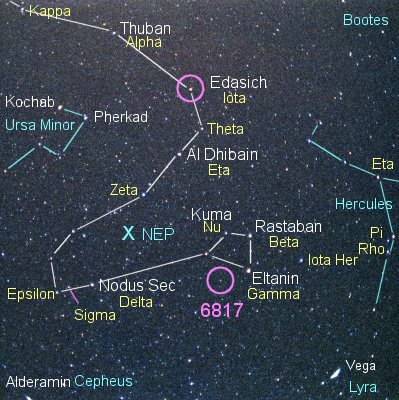

THE PLANETThe upper circle shows the location of the class K2 giant star Iota Draconis, also known as Edasich (in the constellation Draco). Iota Draconis is the first giant with a confirmed substellar companion. The companion has a large lower mass limit of 8.9 times the mass of Jupiter in a relatively large elliptical orbit of 1.3 Astronomical Units (195 million kilometers, 120 million miles), 30 percent larger than the orbit of the Earth. During its "year" of 536 days (1.47 Earth years), the high eccentricity takes the small body from a maximum distance of 2.1 AU to a minimum of 0.39 AU and back again, which would make inner planets impossible. The unknown orbital tilt or inclination makes it impossible to know how high the mass of the small body really is. The high lower mass limit consequently makes it quite possible that the companion to Iota Draconis might be a brown dwarf rather than a planet. (Brown dwarfs are substars that are not massive enough to run full fusion in their cores, while planets are built up from dusty leftover disks the circulate around new stars.) |